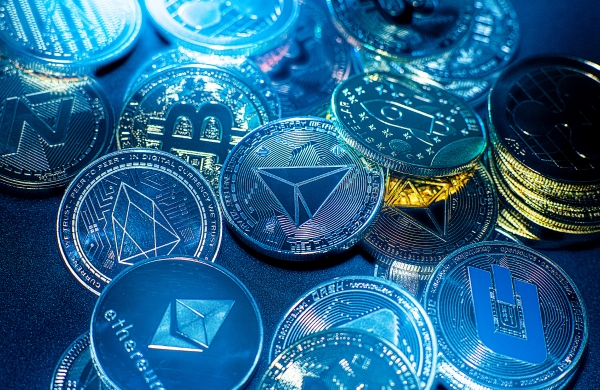
In the ever-evolving landscape of cryptocurrencies, stability has emerged as a sought-after attribute. Amid the wild price swings and volatility that characterize the crypto market, stablecoins have gained prominence as a means to provide reliability and consistency. These tokens, pegged to the value of specific currencies or commodities, offer a sense of security in a realm often characterized by uncertainty. However, not all stablecoins achieve their stability goals in the same manner. Here we explain the world of stablecoins, categorizing them based on their mechanisms and shedding light on their unique attributes.
The Three Main Categories of Stablecoins
Stablecoins can be classified into three primary categories based on their underlying mechanisms: fiat-backed, crypto-backed, and algorithmic.
Fiat-Backed Stablecoins
Fiat-backed stablecoins, represented by prominent tokens like USDT and USDC, are among the most well-known and widely adopted stablecoins. These tokens are backed by reserves of traditional fiat currencies such as the US dollar or the Euro. The stability of these stablecoins relies on maintaining a 1:1 peg to the backing currency. To achieve this, the issuer ideally holds an equivalent amount of the currency in cash or cash equivalents, ensuring that the circulating supply matches or even exceeds the reserves.
Crypto-Backed Stablecoins
Originating from the world of Decentralized Finance (DeFi), crypto-backed stablecoins like DAI and LUSD utilize cryptocurrencies as collateral to maintain stability. Due to the inherent volatility of cryptocurrencies, these stablecoins require overcollateralization to a specific ratio to ensure their value remains steady. For instance, a 150% collateralization ratio implies that $150 worth of crypto is needed to mint $100 of the stablecoin. DAI, the largest crypto-backed stablecoin, includes a diverse range of collateral, including centralized fiat-backed stablecoins and even US treasuries.
Algorithmic Stablecoins
Algorithmic stablecoins take a different approach, relying on algorithmic and incentive mechanisms to uphold their price stability. Although designed to be decentralized, these stablecoins may or may not have actual backing. Their value stability is tied to consistent demand, and when this demand falters, they can spiral into what’s known as a ‘death spiral.’ Examples like Basis Cash, Empty Set Dollar, and Terra’s UST underscore the challenges inherent in maintaining stability through algorithms alone.
Also Read: How many bitcoins are there in circulation?
Beyond the Main Categories
While the three main categories offer a comprehensive overview of stablecoin types, there are other stablecoins that defy easy classification.
Asset-Pegged Stablecoins
Stablecoins like Paxos Gold and Tether Gold stand out by pegging their value to physical assets, such as precious metals. These tokens claim to hold physical reserves of the respective assets, providing an additional layer of stability.
Non-Pegged Stablecoins
Tokens like RAI exemplify the category of non-pegged stablecoins. These are crypto-backed but lack a direct tie to any specific asset. Instead, their value fluctuates based on supply and demand dynamics.
Navigating the Stablecoin Trilemma
Much like the blockchain trilemma, stablecoins face their own set of challenges, often referred to as the “stablecoin trilemma.” This trilemma involves the trade-offs between stability, decentralization, and capital efficiency. Stablecoin designs typically need to compromise on one aspect to achieve the other two. The pursuit of a stablecoin that strikes the right balance among these factors remains ongoing, with various projects striving to find the optimal solution.
Also Read: Understanding Node, Client, RPC, State & Virtual Machine in Crypto
Conclusion
Stablecoins have emerged as a vital component in the cryptocurrency ecosystem, offering stability in a landscape notorious for its price volatility. Their diverse mechanisms and classifications cater to different needs and risk appetites. As the race to create a stablecoin that successfully balances stability, decentralization, and capital efficiency continues, the world of stablecoins remains one of the most intriguing and dynamic areas within the realm of cryptocurrencies.

Leave a Reply